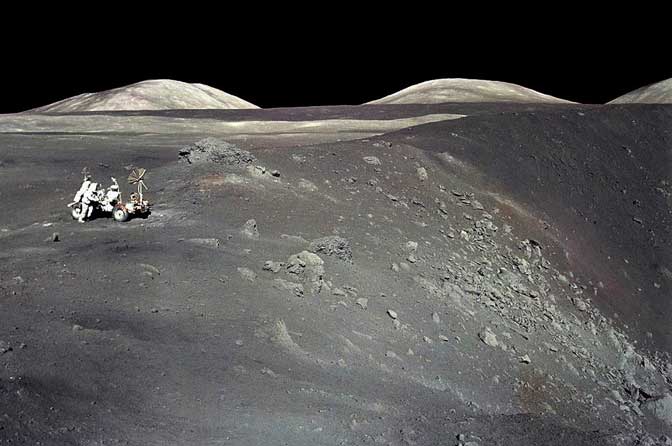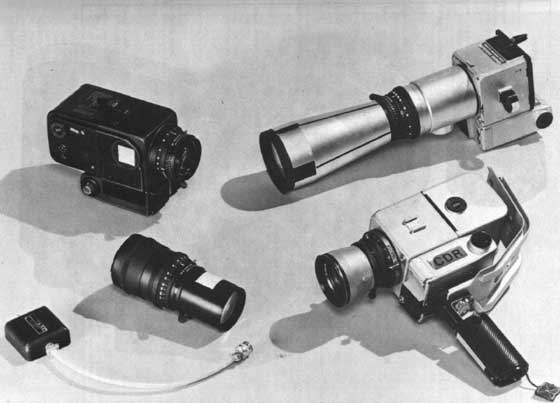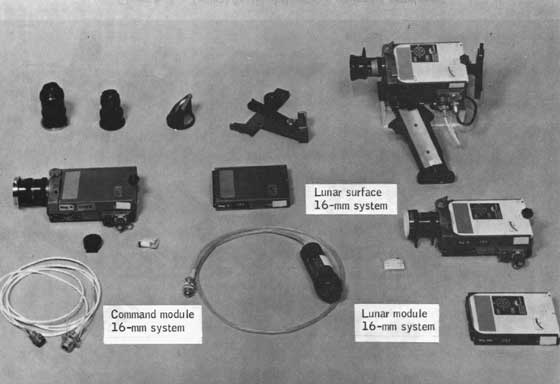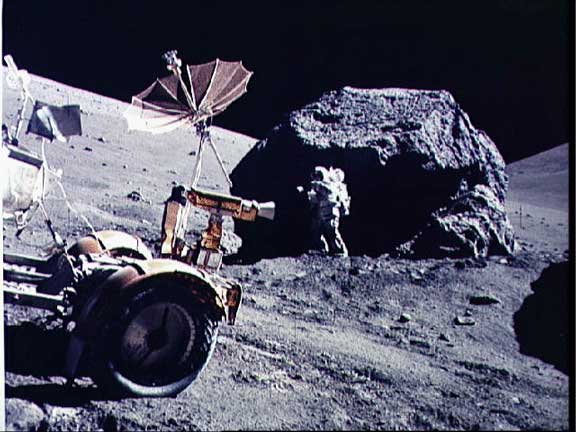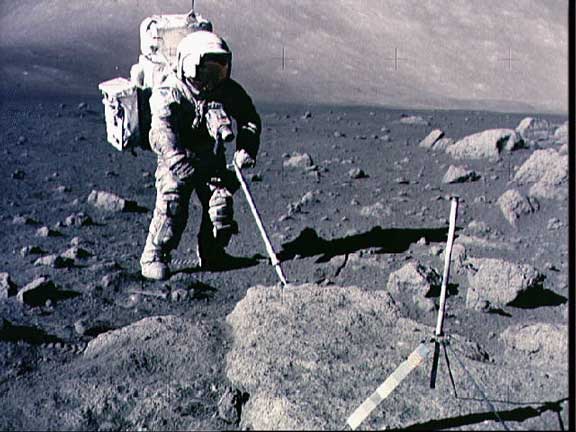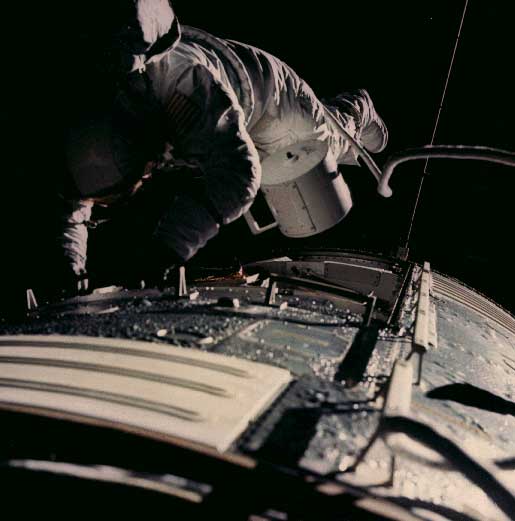In December of 1972, Apollo 17 astronauts Eugene Cernan and Harrison Schmitt spent about 75 hours on the Moon in the Taurus-Littrow valley, while colleague Ronald Evans orbited overhead.
The image shows Schmitt on the left with the lunar rover at the edge of Shorty Crater, near the spot where geologist Schmitt discovered orange lunar soil. The Apollo 17 crew returned with 110 kilograms of rock and soil samples, more than was returned from any of the other lunar landing sites. Now forty years later, Cernan and Schmitt are still the last to walk on the Moon.
Three 70-millimeter Hasselblad data cameras were carried by the astronauts on the lunar surface.
The 16-millimeter Maurer Data Acquisition Camera had frame rates of 1, 6, and 12 fps in the automatic mode and 24 frames per second in the semiautomatic mode with corresponding running times of 93.3, 15.5, 7.8, and 3.7 minutes respectively.
Sampling at Station 6 centered around the boulder behind the Lunar Module Pilot. The dark bootprints in the foreground and near the base of the boulder indicate the areas of astronaut activity.
The Lunar Module Pilot uses the scoop to collect a sample at Station 5. The high density of boulders along the rim of Camelot Crater is shown in this photograph.
Astronaut Ron Evans is pictured retrieving film canisters from the Mapping and Panoramic Cameras in the Service Module. He is holding a handrail on the Service Module, and his body is extended over the open instrument bay. The Mapping Camera film canister is near his left elbow. At the rear of the Service Module, the Lunar Sounder Experiment’s VHF antenna extends toward the top right corner of the photograph.
// Thx – The Moon, Lunar Institute
